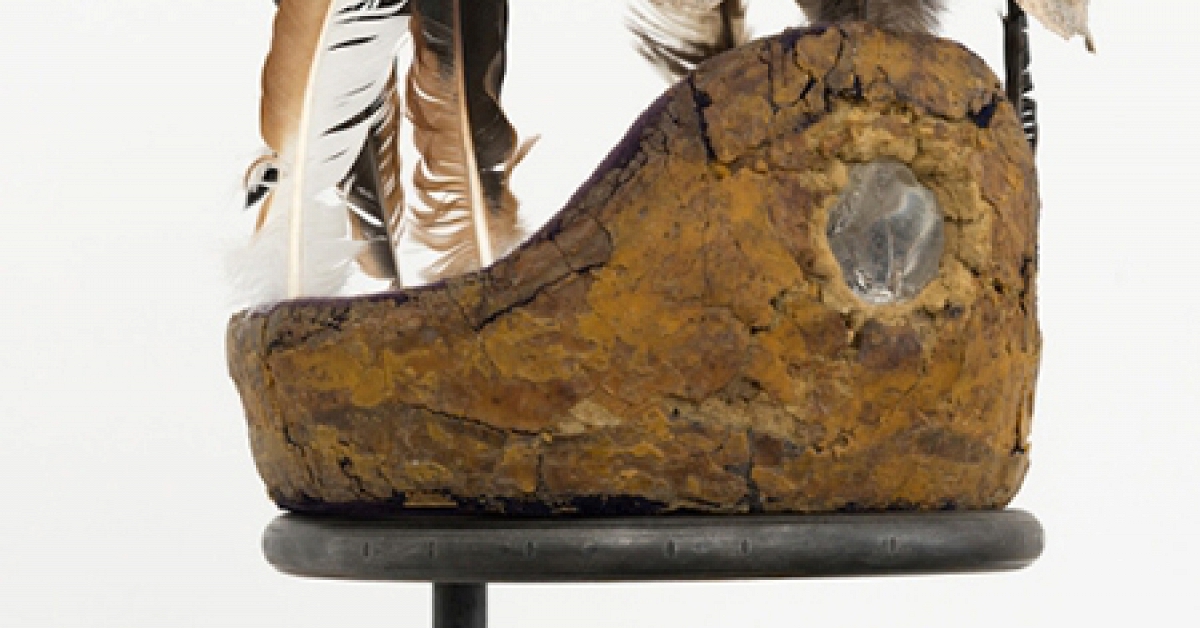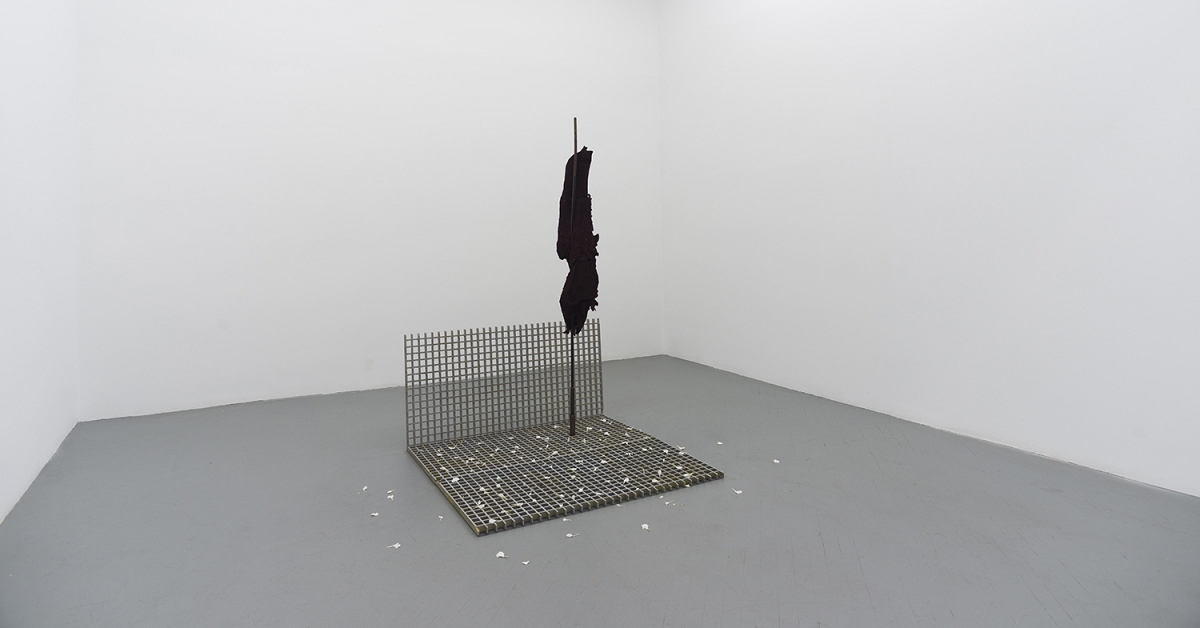Structure Without a Center: Jennie C. Jones Interviewed
BOMB Magazine / Jul 29, 2020 / by Jared Quinton / Go to Original

Jennie C. Jones, Fractured Crescendo, Rest, 2019, acoustic panel, acrylic on canvas, 2 parts: 36 × 24 × 3 inches; overall: 36 × 49.5 × 3 inches. Photo by Pierre le Hors. Courtesy of the artist; PATRON Gallery, Chicago; Alexander Gray Associates, New York; and the Arts Club of Chicago, Chicago.
Minimalist painting with a maximalist impulse.
The work of Jennie C. Jones rewards sustained contemplation. Her paintings, sculptures, and acoustic installations coax viewers to consider the intertwined phenomena—and histories—of sight and sound, looking and listening. Jones’s exhibitionConstant Structurewas installed at the Arts Club of Chicago the week it closed due to COVID-19. (The exhibition space has since reopened.) From her studio in upstate New York, she spoke with me about the new directions pursued in this body of work and the continuing resonance of Minimalism.
—Jared Quinton
Jared Quinton
I’d love to start our conversation by considering the idea of “constant structure.” In some ways you embrace a modernist approach to form and content, but there is also an immense freedom in your work, a looseness that goes along with the appearance of rigidity. In his companion text for your exhibition, Fred Moten cites Jacques Derrida’s idea of “structure without a center.” Can you talk a bit about how you conceptualize the role of structure in your practice?
Jennie C. Jones
I’d like to start off a bit “meta” by saying it’s not easy to discuss works I wasn’t able to experience installed or to consider their impetus from before such dark times. I installed the show via FaceTime.
Constant structureis a chord progression consisting of three or more chords of the same type or quality. Brought to the fore by Herbie Hancock, it’s more or less a combination of functional and nonfunctional chords that create a cohesiveness while producing a free and shifting tonal center.This concept was something I gravitated to on multiple levels; it’s a poetic phrase in itself that seemed to encompass where I was in the “progression” of my work in terms of its vernacular, geometric vocabulary; or to continue the metaphor, the visual “chords” I’ve been building over time.
In many ways this was a playful body of work for me. Some of the gravity or anchor came from the collaboration with Moten, conversations I’ll cherish for a long time. It freed me up to be a maker and take some heavy, theoretical “explaining” off my plate.
In another respect, the timing of the exhibition was quite personal in that another type of constant was shifting. After twenty-three years in Brooklyn, I’m reestablishing my practice and my life in upstate New York. When I think of Derrida’s idea of a “structure without a center,” I think also of some type of buoyancy, an unnamable thing that compels artists toward a constant striving—a struggle against and an acceptance of knowing that there really is no center, that it’s a mysterious continuum, at best.
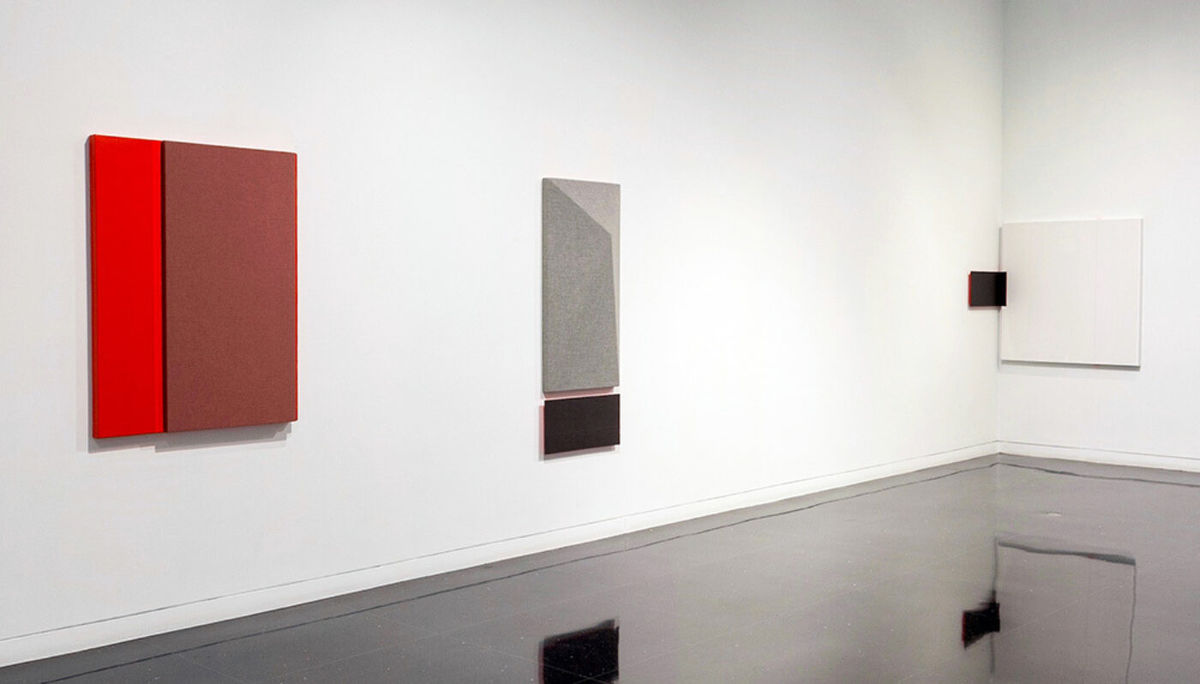
Installation view of Jennie C. Jones: Constant Structure, The Arts Club of Chicago. Photo by Lori Wolan. Image courtesy of the Arts Club of Chicago, Chicago.
JQ
There’s a lot to unpack here. I like this idea of structure as fluid and dynamic, something that sort of moves or changes as you use it, which then feeds back into what you are creating. Perhaps this isn’t so radical to people who know how jazz works, but it helps me understand what you are doing both formally and conceptually in the way that structure almost functions as a material for you. What does this playfulness look like in your work for the exhibition?
JCJ
Yes, much to unpack! Maybe I’m actually a maximalist who reduces these notions into a kind of neo-minimalism. Perhaps it’s antithetical to think of structure as fluid at first look, but Fred also points to Amiri Baraka’s “changing same” in tandem with Derrida, noting the magic he brings to the conversation.
The newness in this particular body of work happens in pieces likePhrasing to the Floor(2020). Bringing the work even slightly off the wall feels like a long time coming in that I have always been mindful of the pieces almost more as objects rather than “paintings”—in particular how their objectness affects the sound in the spaces they occupy. This body of work has more components, often doubling almost in the form of diptychs and triptychs, treating them like chords.I always return to materials, geometry, the language of notation, and sonic thought as my parameters. Although I often speak of architecture in relationship to acoustics, I’ve stayed on the wall for the most part.
Another element of newness is the hot colors, which are usually relegated to the edges of works, creating a humming, a bouncing of tone on the wall. Those have now been brought to the fore. InUnit Structures #1–4(2019–20) the oxide and bright reds I mixed are more frontal and aggressive. The subtle lines inside the picture plane rather than at the edges are a way of almost painting the shadows of form, which is again a shift toward amplifying objecthood.
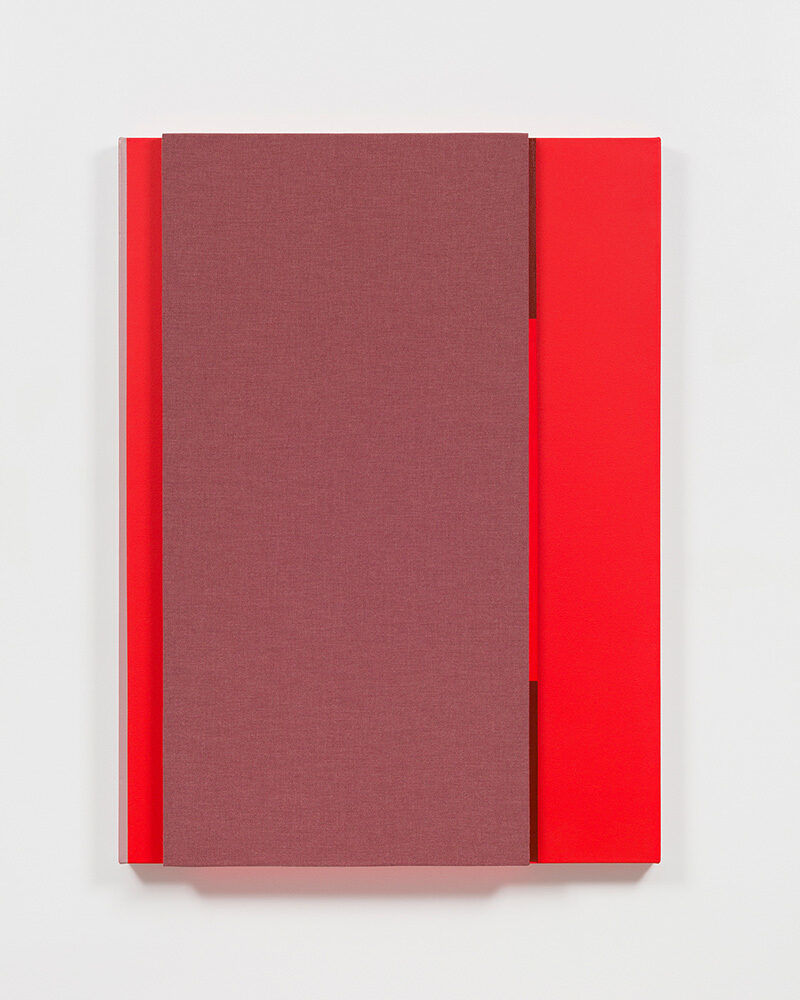
Jennie C. Jones, Unit Structure #2, 2019–20, acoustic panel, acrylic on canvas, 48 × 36 inches each. Photo by Pierre le Hors. Courtesy of the artist; PATRON Gallery, Chicago; Alexander Gray Associates, New York; and the Arts Club of Chicago, Chicago.
JQ
It’s noteworthy that this formal language you’ve developed is so restrained that seemingly subtle gestures can be so full of meaning, can become moments of great tension or release. You referenced Minimalism, and I’m interested in how you relate your practice to this legacy both as a historical context and a theoretical proposition about objects in space. I remember you once spoke about the expressive, affective potential of “lack,” and that has really stuck with me.
JCJ
Yes, many dichotomies: tension and release, noise and silence, gesture and color field—Minimalism is not easy! Often, I think there is a misconception regarding labor and sparseness. It’s an effort that is somehow about utility, necessity, refinement, a condensing of thought.
The labor of gesture and mark-making filling a space and then the real work of “removing the hand” from that surface are, kind of ironically, a maximalist process. I don’t like the term “reductive” which was used often in the origin narrative around Minimalism. Reduced from what? The idea of lack can be turned on its head in order to be perceived as pure potential and opportunity. That maybe relates directly to African American improvisation and creative utility, to working inventively with spare means. It speaks to an ability to refine or hone in, in my case on a line or consideration of proportion.
I was recently asked to comment on the influence of Donald Judd in light of MoMA’s retrospective exhibition, which I’ve actually not seen yet, and I wrote the following:
My first encounter with Judd as a young art student was a fundamental consideration of objecthood. As a painter, the satisfaction of stretching a canvas with copper tacks, the thumping upon completion of it to hear the sound of toughness—that in itself was somehow enough. Judd prompted me to consider that it just might be. There are social and political ramifications to rejecting “subject” and embracing “object”—as an African American woman, much more is at stake. Minimalism becomes a radical gesture empowering a refusal to sell my narrative or bodies.
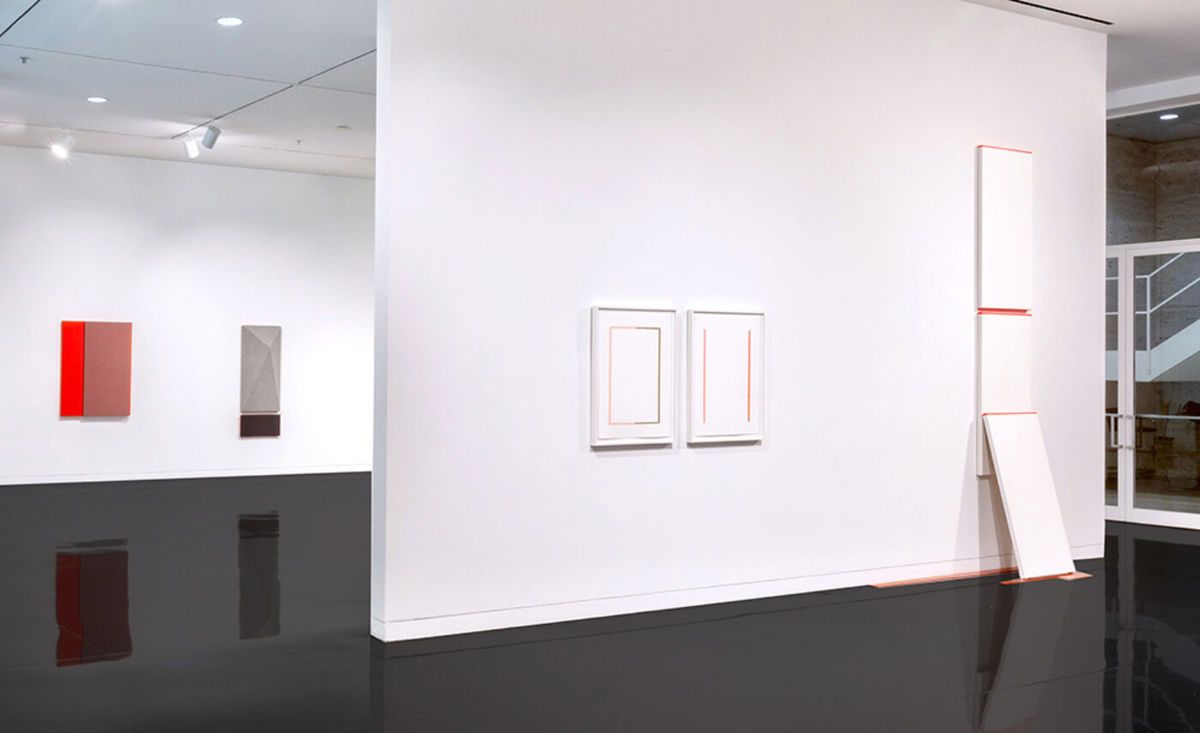
Installation view of Jennie C. Jones: Constant Structure, The Arts Club of Chicago. Photo by Lori Wolan. Image courtesy of the Arts Club of Chicago, Chicago.
JQ
You get so many requests to talk about Minimalists! I was lucky enough to attend your Dialecture on Agnes Martin. You’ve mentioned a particular need for artists of your generation to bolster their work with an academic and historical lens, and yet I can’t help but feel that what you are doing exceeds this. There is power in the way you redirect a seemingly rigid aesthetic discourse to make it address things it historically has not addressed, or at least has not been thought to.
Crises like a global pandemic seem to demand a certain kind of almost propagandistic art to meet the occasion, but there is so much political potential in refinement, sparseness, quiet. I think we as contemporary subjects can fall into the trap of thinking our current moment is exceptional and forget how we got here. Without asking you to over-historicize, how are you thinking about making your work right now?
JCJ
Yes, forgetting how we got here; that’s huge, on all fronts—in creative fields, socio-politically, and environmentally, in tandem with a pandemic that is highlighting all of the latter. My undergraduate education in the early ’90s had a heavy emphasis on art history, but that smashed up against poststructuralism infiltrating art schools. The big bomb for me was Lucy Lippard’s bookMixed Blessings: New Art in a Multicultural America.The totality of that made for explosive discourse and gave rise to “multiculturalism” as a thing. My greatest honor was to be a contributor to the Alma Thomas monograph in 2016. I also wrote honestly and critically inArt in Americaabout my first encounter with the Ellsworth Kelly commission at the Art Institute of Chicago. It’s complicated.
I remain very grateful for my early experiences, which sparked two things: a deep appreciation of history and art history, and a desire to question it. Where was I in that history? To be at once a part of and an interloper in the context of artmaking.
I was recently invited to be a part of Dia’s Artist Playlist series. I ended up doing a deep dive into the early ’70s black sonic pioneers and called the set “Future Days, Yesterday.” It seems to me as if during that period that instead of wanting to “see ourselves” within the canon or on the walls of museums, we wanted to deconstruct all of it and make new models. That happened again in the ’90s, briefly; but money won in the end.
In the studio and with this playlist I’m addressing how I’ve felt put in a jazz box when being asked about sound work, perhaps by my own doing, because I’ve celebrated my love for it. But I was a punk kid, and in hindsight I’ve come to understand that what I’ve really been trying to unpack is the radicality of refusal and the courage that it requires.
Jennie C. Jones: Constant Structure is on view at the Arts Club of Chicago until September 19.




